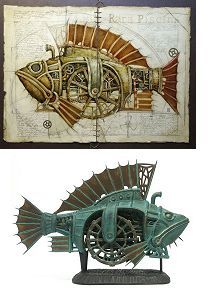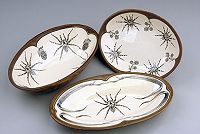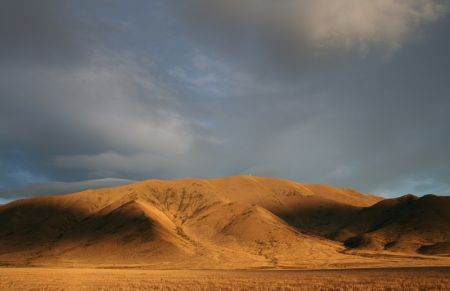Maxine McKew (7.30 Report) did a lovely interview the other night with artist Margaret Olley. Part of the charm was non-verbal, the smiling eyes, expressions, gestures, the unsaid knowingness, on each side. But this was my favourite part of the verbal :
MAXINE McKEW: You’ve said you paint for yourself. Is that right?
MARGARET OLLEY: I do. Who would you paint for?
MAXINE McKEW: So you don’t have a particular market in mind or?
MARGARET
OLLEY: Oh, perish the thought! No, the only reason you have an
exhibition…is really, that moment when they say “it’s up”.
MAXINE McKEW: The book also documents…some dark moments and one of them of course is your battle with alcoholism.
MARGARET OLLEY: Oh, yes. Whatever I do, I do it to excess. (Laughs). Whatever I do, I do it to excess.
(via Articulate)
I’m fond of Maxine McKew. She is an astute political interviewer, a feminist, and an excellent presenter, and then occasionally you also get to see her conduct a more relaxed personal interview like this. Another I particularly remember was a conversation with Yasmine Gooneratne, an English literature academic, about the rash of Jane Austen adaptations. It was obvious from twinkling eyes that McKew appreciated Andrew Davies’ 1995 adaptation of Pride and Prejudice.
Incidentally, the Gooneratne family run Pemberley House, an International Study Centre in Sri Lanka, which I think is essentially a retreat. I’ve always thought it would be fun to visit there. Thinking about the attraction now, I’m wondering if there is something about the look of it – perhaps a similarity with Natal? – that triggers some memory from my South African childhood. I only lived there until I was 7, and don’t think of myself as rememering much about it, but I was listening to J. M. Coetzee reading his South African book Boyhood on First Person recently, and was astounded at how evocative it was for me. I instinctively understood words that I had not heard since I was little, and could see again scenes that I had forgotten I knew.
Updated links 2015
 Vladimir Gvozdariki is a Russian artist who makes whimsical figures, animations and images. Some are pleasing in their simplicity, but I particularly like his complicated drawings of mechanized animal structures. They are in numerous places in his galleries, like here, here and here and here. I also like how some, like this fish, have made the transition from drawing to sculpture. I could imagine them being used theatrically, and some aspects -the whimsy and the technical details – remind me of some of Shaun Tan‘s creatures in The Lost Thing.
Vladimir Gvozdariki is a Russian artist who makes whimsical figures, animations and images. Some are pleasing in their simplicity, but I particularly like his complicated drawings of mechanized animal structures. They are in numerous places in his galleries, like here, here and here and here. I also like how some, like this fish, have made the transition from drawing to sculpture. I could imagine them being used theatrically, and some aspects -the whimsy and the technical details – remind me of some of Shaun Tan‘s creatures in The Lost Thing.










